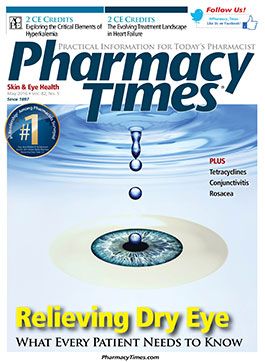Publication
Article
Pharmacy Times
FDA Draft Guidance Encourages Access to Abuse-Deterrent Generic Pain Drugs
Author(s):
The abuse and misuse of prescription opioid analgesics have created one of the most serious and growing public heath epidemics in modern health care.
The abuse and misuse of prescription opioid analgesics have created one of the most serious and growing public heath epidemics in modern health care. Therefore, the FDA considers the development of opioid drug products formulated to deter abuse a high public health priority. This, coupled with increasing patient reliance on lower-cost generic prescriptions, has created a need for the agency to ensure that the generic versions of these abuse-deterrent drugs are no less abuse-deterrent than the brand name versions on the market.
The FDA recently released draft recommendations to encourage industry stakeholders to produce abuse-deterrent generic opioids that are safe and effective. “For the millions of Americans who suffer from significant pain, and the health systems that serve them, generic opioids can be an appropriate and affordable option for patient care,” said FDA Commissioner Robert Califf, MD, in a press release. “We recognize that abuse-deterrent technology is still evolving and is only one piece of a much broader strategy to combat the problem of opioid abuse, but strongly encouraging innovation to increase access to generic forms of abuse-deterrent opioid medications is an important element in that strategy.”
In particular, the agency has expressed concern that, where abuse-deterrent properties are described in the labeling of a brand name product, marketing a generic version that is less abuse-deterrent could lead opioid abusers to preferentially seek out and abuse such easier- to-use generics. “Collaboration is critical in fostering innovation in the field of abuse deterrence,” said Douglas Throckmorton, MD, deputy director for regulatory programs in the FDA’s Center for Drug Evaluation and Research, in a press release. “It is essential that a generic product is no less abuse-deterrent than the brand name product.”
The document suggests that drugs must contain 1 or more of the following properties in order to be recognized as abuse-deterrent opioids by the FDA: physical/chemical barriers, agonist/ antagonist, aversive agents, or combinations of 2 or more of these technologies.
The FDA also acknowledges that abuse-deterrent formulations might still lead to addiction, overdose, or death, but that the abuse-deterrent properties can make it harder for an individual to crush, snort, or dissolve a product. Currently, no FDA-approved opioid products are expected to deter abuse if the product is swallowed whole.
To combat prescription drug abuse, health professionals across the entire care spectrum must seek a comprehensive strategy that does not rely only on abuse-deterrent formulations, but also on involved collaborative drug therapy management between providers, the use of prescription drug monitoring programs, and prescriber—patient education tools.
The draft guidance comes just less than a year after the FDA published its final guidance, “Abuse-Deterrent Opioids—Evaluation and Labeling,” and amid other agency efforts to reassess its approach to addressing the abuse epidemic. Some of the areas that the FDA will explore are the “risk-benefit paradigm for opioids,” as well as better pain management options, including alternative therapies.
“We are determined to help defeat this epidemic through a science- based and continuously evolving approach,” said Dr. Califf. “This plan contains real measures this agency can take to make a difference in the lives of so many people who are struggling under the weight of this terrible crisis.” The FDA noted that fatal drug overdoses are the leading cause of injury death in the nation.
With respect to the draft guidance, the FDA is encouraging feedback from industry stakeholders during the first 60-day comment period and plans to hold a public meeting later this year on the subject.







